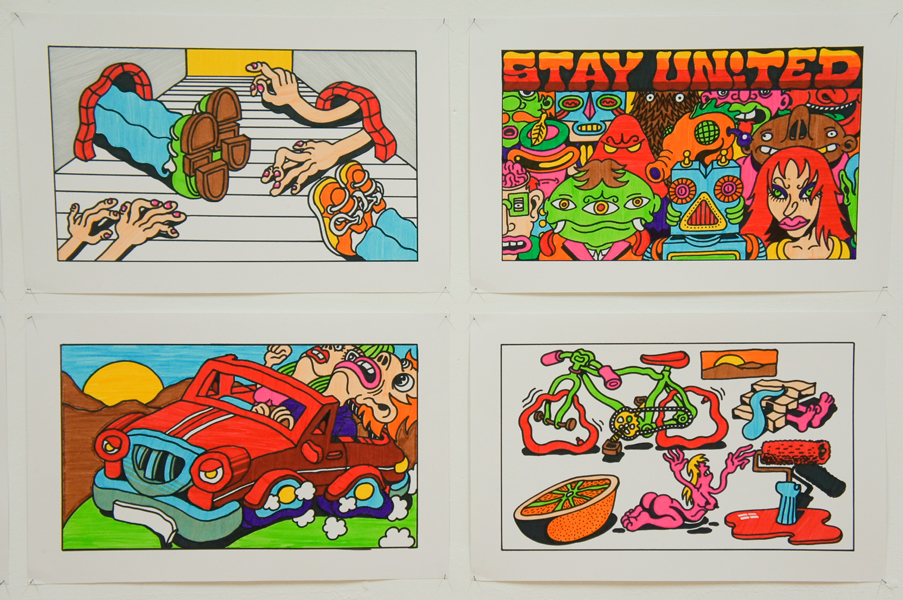In November 2012, as part of a contemporary drawing festival in Toulouse called Graphéine, we occupied the space provided by the Art de Muret Platform. This exhibition allowed us to present a first step in our research for our project in Greece.
Our aim was not to describe or develop precisely our future possible interventions, but rather to give a fictional approach to a project that oscillates between reality, probability, and utopia. In this process, we presented two series of drawings: maps, sketches, graphic novels whose final aspects were voluntarily undefined, making way for free interpretation.
This exhibition was also an opportunity to reflect on ways of production adapted to the specific characteristics of billboards, either because of their monumental size or their implantation. So, part of the preparation for the exhibition was dedicated to conceiving large-scale drawing tools such as ink stamps, screen rollers, telescopic poles for paint cans and to the appropriation of everyday objects like garden vaporizers or fire extinguishers to rapidly cover large surfaces.
The exhibition space we were given allowed us to attempt full-scale experimentation with these tools. Consequently, the public was confronted to a monumental drawing, typically intended for far-away viewing, without the possibility to step back in the exhibition space. (Mural size : 13 x 4 m).
The mural’s conception made it possible for our imagination to merge with historical elements linked to the current situation in Greece, like these unexplained collective phenomena. The word Tanzwut refers to a historical phenomenon, a collective trance that happened in the city of Strasbourg in 1518. A part of the local population started dancing frenetically for months, some to the point of dying of exhaustion. The causes of this hysteria still remain hazy, the most likely hypothesis being that extreme social conditions (threats of invasion, famines, epidemics, precarious life conditions) provoked a form of collective psychosis.
On this subject, an online article is accessible for consultation on the Article 11 newspaper website, ‘1518, Strasbourg entre dans la danse…’ dating back to December 5, 2012.








